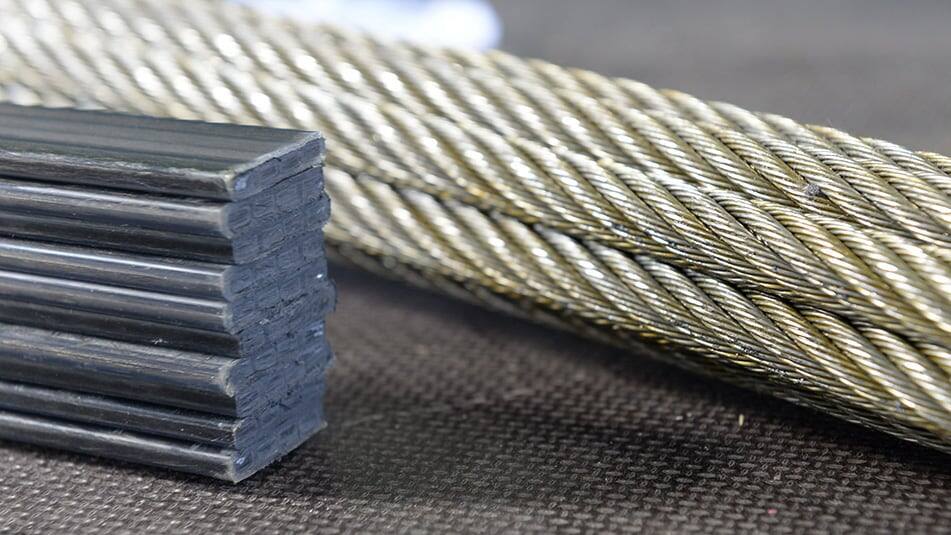At first glance it doesn’t look like much, a flat piece of black licorice, perhaps. But the superlight KONE UltraRope® is a completely new take on elevator hoisting. Made of a carbon fiber core surrounded by a unique high-friction coating, it weighs only about a fifth of a similar conventional steel rope.
“You wouldn’t think it, but rope weight impacts everything,” says Santeri Suoranta, head of technology for Major Projects at KONE. “If you have a lighter rope, you can have a smaller and lighter elevator counterweight and sling. This means the overall moving masses are reduced.”
This matters, especially as buildings get increasingly taller. The top 10 tallest in the world all already reach heights of more than 500 meters, or roughly 100 floors per building. In structures this tall, using conventional elevator hoisting technology means moving masses weighing around 27,000 kilograms. This is like fitting 10 off-road vehicles inside the shaft and moving them up and down alongside the elevator!
At around this point the ropes become so heavy that additional ropes are needed just to hoist the weight of the ropes themselves. This is one reason most very tall buildings feature sky lobbies reachable from ground floor by one set of elevators, with another set of elevators taking people onwards to higher levels.
Enter KONE UltraRope. It cuts the weight of moving masses inside the shaft for a 500-meter tall building to roughly 13,000 kilograms, or the equivalent of 4 off-road vehicles. This reduction is so significant that it enables travel from ground floor to penthouse in one continuous elevator journey – even in a building that rises to a height of one kilometer!
LESS DEADWEIGHT, MORE BENEFITS

With KONE UltraRope, the higher you go, the bigger the benefits because the lower moving masses enable cuts in the deadweight that’s transported up or down every time someone hops into a high-rise elevator. This means less energy consumption and lower operating costs. For example, the energy savings for a 500-meter elevator journey using KONE UltraRope is around 15% when compared to conventional technology. For an 800-meter journey, the savings are over 40%.
Building sway is another challenge faced by elevators in tall buildings. Here, again, KONE UltraRope offers a solution. Because carbon fiber resonates at a completely different frequency to most building materials, including steel and concrete, KONE UltraRope is less sensitive to building sway and enables reductions in elevator downtime during strong winds and storms.
The Marina Bay Sands integrated luxury resort in Singapore was the first to replace some of its conventional steel ropes with KONE UltraRope. Other major projects like Sky Tower in Auckland, New Zealand, and the premium 180 Brisbane office building in Australia have also adopted the new technology. KONE UltraRope is also set to feature in the world’s tallest building-to-be, Jeddah Tower in Saudi Arabia.
NO RUST, NO WEAR

While KONE UltraRope makes travel easy, it also makes maintenance hassle-free. Unlike steel, it does not rust, stretch or wear. Its special coating does not require lubrication, making environmentally friendly maintenance the status quo.
KONE UltraRope’s longer product lifetime is a boon too, as changing ropes in a tall building is no easy task.
“We have a rope that works, is reliable, and delivers on our promises,” Suoranta beams. “This is a good place to move on from.”
Learn more about our solutions for high-rise buildings: https://www.kone-major-projects.com/high-rise-solutions/
This is an adaptation of a story originally published in 2013.
